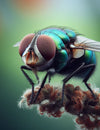No products in the cart.
Cockroach killer gel and cockroach chalk are both popular methods for controlling cockroach infestations, but they have different characteristics and advantages. Let's compare them to understand why cockroach killer gel is often considered better than cockroach chalk:
Application method:
- Cockroach chalk: Cockroach chalk, also known as cockroach chalk or cockroach powder, is applied by drawing lines or barriers on surfaces where cockroaches are likely to crawl. While it's easy to use, it may not be as effective in hard-to-reach areas or narrow cracks and crevices.
- Cockroach killer gel: Cockroach killer gel comes in a tube with a small nozzle, allowing for precise application in tight spaces and hard-to-reach areas where cockroaches tend to hide. The gel can be easily placed along cracks, gaps, and corners, increasing its effectiveness.
Attractiveness to cockroaches:
- Cockroach chalk: Cockroach chalk may not be as attractive to cockroaches compared to the gel since it primarily works as a physical barrier. While it may deter some cockroaches from crossing the line, others may find a way around it.
- Cockroach killer gel: Cockroach killer gel is formulated to be highly attractive to cockroaches. It contains a bait that lures them in, encouraging them to consume the gel actively. The gel acts as a potent insecticide, effectively eliminating not only the cockroach that consumed it but also others that come into contact with the poisoned cockroach.
Mode of action:
- Cockroach chalk: Cockroach chalk usually relies on physical contact with the insect to kill it. The powder or substance on the chalk's surface can be abrasive or toxic, leading to the cockroach's demise once it crawls over it.
- Cockroach killer gel: The gel contains insecticides that are slow-acting, allowing the poisoned cockroach to return to its nest before dying. This behavior is beneficial since cockroaches are social insects, and they will groom each other. The poisoned cockroach can transfer the insecticide to other members of the colony, effectively leading to a more comprehensive eradication.
Residual effect:
- Cockroach chalk: The effectiveness of cockroach chalk may diminish over time, especially if it gets wiped away or becomes less potent due to environmental factors like moisture.
- Cockroach killer gel: Cockroach killer gel often has a longer residual effect, remaining active for an extended period even after application. This is advantageous as it continues to control the cockroach population over time.
Safety and cleanliness:
- Cockroach chalk: Cockroach chalk can be messy to apply and may leave visible marks on surfaces. Some chalk formulations may also contain toxic chemicals that can be harmful to humans and pets if ingested or inhaled.
- Cockroach killer gel: Cockroach killer gel, when applied correctly, is generally a cleaner and safer option. The gel is contained in a tube and can be precisely placed, reducing the risk of accidental exposure to humans and pets.
Targeted approach:
- Cockroach chalk: Cockroach chalk primarily acts as a barrier in specific areas, limiting its effectiveness in treating widespread infestations.
- Cockroach killer gel: Cockroach killer gel allows for a more targeted approach, making it easier to focus on areas with higher cockroach activity and potential nesting sites.
In summary, cockroach killer gel is often considered superior to cockroach chalk due to its more precise application, greater attractiveness to cockroaches, extended residual effect, and safer use. However, it's essential to carefully follow the instructions and safety guidelines provided with any pest control product to ensure effective and safe usage.
Leave a comment



